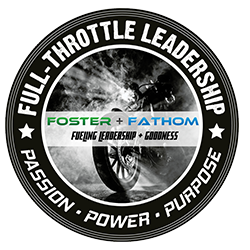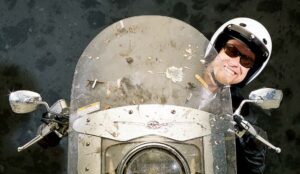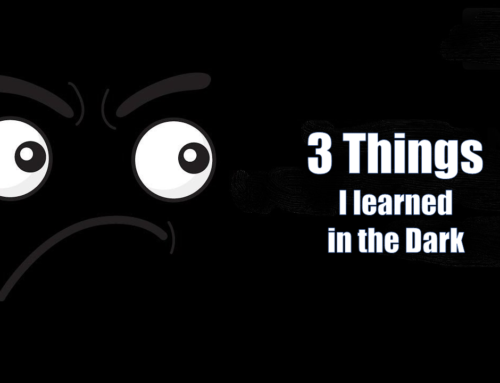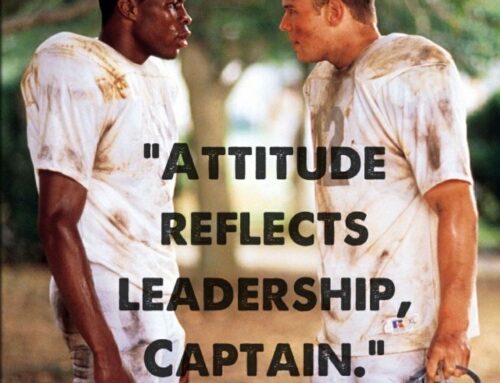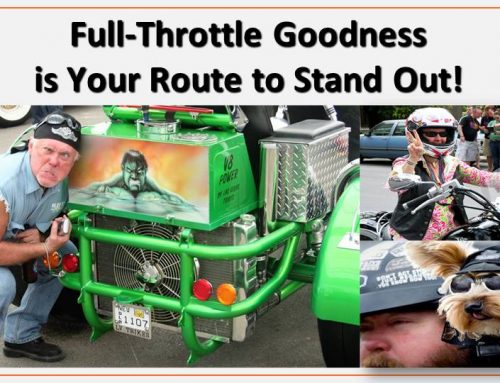One of the best things about riding motorcycles is the time you get “inside your head.” I often use those moments reflecting on where I’ve been on my “professional ride,” and remembering all the leaders and mentors who thought me worthy of investing time, talent, and treasure in my journey. That’s certainly been the case on this Ride.
No matter where you are going, on a bike or in business, each one of needs help along the way. None of us becomes successful by ourselves, and anyone who says different is just arrogantly wrong. So, of course, I completely reject the “been there, done that, got here on my own” attitude we experience all the time in so-called leadership. If you’ve been “there” someone pointed the way. And if you’ve done “that” someone taught you how.
I experienced this early in my career in the person of Col. Edwin C. “Ned” Humphreys, JR. USAF, Retired (1938-1969) * who I met in 1978 when he was publisher and editor of a small weekly newspaper in Mobile, Alabama.
I was looking for a job as a photographer, one for which I was uniquely unqualified for, having no real, professional experience other than I enjoyed taking pictures on Kodak instant cameras and the occasional 35mm borrowed from friends or family. In fact, my only relevant preparation was a 24-hour crash course in film development from my brother, Rod (himself an experienced aviation photographer). I’m sure my sister-in-law Joyce was less than pleased when she discovered the toxic chemical spill we left behind in her kitchen, which we converted into a darkroom that evening!
This was long before digital; at that time film was packaged in rolled canisters and developed in a darkroom using various chemicals. I didn’t know how to do that either. Rod was a patient and good teacher. Unfortunately, I was a less than prepared 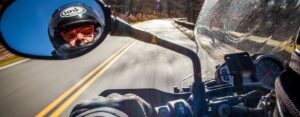 student.
student.
So, armed with limited skills, boundless ego, and a ridiculous over-estimation of my abilities, I headed for my interview at the newspaper with Col. Ned. And I flat out ROCKED our time together, Col. Ned gave me an assignment on the spot, sliding a Yashica Mat-124 G camera (Google it!) across his desk and sending me out to photograph a high school baseball game. The drive to the high school took just a few minutes, which was helpful, because I had never even seen a Yashica Mat-124 G camera before. By the time I figured out the box-shaped crank-advance camera is operated by holding it at waist level and looking down into a flat glass viewfinder, the game was already in the sixth inning.
I completed the assignment and headed back to the newspaper office, confident of the praise and unprecedented pay raise certainly must be waiting for me.
On arrival, Col. Ned immediately sent me to develop the film and submit my work. That’s where everything happened and none of it was good.
Inside a pitch-black darkroom, I opened the camera and began to remove the film. My fingers fumbled across something I didn’t expect to find, a 2-inch wide roll of 120mm wooden spool wound with film. My overnight crash course in photography focused entirely on 35mm format, housed in a small metal container less than an inch wide. I didn’t know it, but the film wasn’t the only thing about to be exposed.
After several failed attempts to manipulate the film and with any reasonable amount of darkroom time long gone, I did the only thing I could think of to solve my predicament; switching on the small light inside the darkroom – very quickly – just enough to see how to open the strange roll of film and transfer it to a developing canister.
Rule number one in a darkroom. Never turn on the light while handling an open canister of film. I exposed the entire roll. I had nothing. And I knew Col. Ned was waiting for me on the other side of the darkroom door. Time to face the music.
“How did it go?” he asked.
I briefly considered trying bluff my way through failure, blaming a faulty roll of film, diluted darkroom chemicals, a malfunctioning camera or phantom light streaks inside the darkroom. Instead, I just confessed.
“I messed up.”
“Yes, you did,” said Col. Ned who then explained my interview hadn’t quite been the slam dunk I believed it to be. He knew immediately I was completely unprepared for the job. This was, as we say in Texas; not his first rodeo. My responses to his strategically probing questions had exposed all my fabrications and limitations, especially concerning any skills in darkroom technique and film development, so he sent me out to learn a life lesson I would never forget.
Turns out the baseball game I was assigned to shoot was a double-header and he already assigned a photographer for the first game. He figured I might be able to take the photos, but he really didn’t care, one way or the other. What he was looking for was how I would respond when exposed as a complete fraud.
Busted, embarrassed, and totally humiliated; I knew the interview was done and the prospect of a job with it. As I rose from the chair which I had steadily been sinking into for several minutes, Col. Ned said two words that changed my life; “you’re hired.”
While I was trying to appear not completely dumbfounded, Col. Ned spoke wisdom that any prospective leader and team member should commit to memory. His three simple rules for success:
- “Ask for help.”
- “Own your mistakes.”
- “Change the thing that makes you lie” (that stung and stuck!)
Col. Ned Humphreys was the definition of a “Full-Throttle Leader.” He was patient, helping every employee push beyond their limitations. Failure was expected, but never accepted. If you owned your mistakes, learned from them, and improved; you were back at it the next day. If not, you didn’t stay around very long. He always found ways to encourage and mentor every member of his staff. He helped us get where we wanted to go. And he made sure we arrived there, humble, grateful, and always prepared.
That’s become my roadmap for leadership success.
Today, whenever I hear someone in a leadership position spout their own achievements without acknowledging the contributions of others; I know that person doesn’t understand or appreciate the first rule of motorcycling and leadership; “Check your Mirrors.”
Mirrors are one of the most important parts of a motorcycle. They reflect a thing as it really is in a very clear and accurate way. When riding, constantly scanning back and checking to make sure the pod is moving safely TOGETHER toward the destination is critical to the success of the ride. Checking your mirrors reminds whoever is out front what is most important each mile of the journey – the people trusting your leadership and backing you up.
Developing “mirror awareness” is central to peak leadership performance. It focuses attention on the elements outside your immediate field of vision; namely everyone following your lead. In a very real sense, the team is the mirror that reflect the leader’s sense of responsibility and influence.
Leadership expert John Maxwell says it this way, “A leader is one who knows the way, goes the way, and shows the way.”
